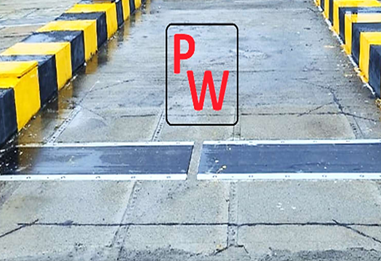Weigh In Motion
We are Manufacturer, Supplier, Exporter of n Motion Road Weighbridges, Road In Motion Weigh Bridge, Weigh In Motion System, WIM Systems. Our setup is situated in Pune, Maharashtra, India.



- A. Real-Time Measurement : Enables immediate weight measurement improving traffic flow and efficiency.
- B. Reduced Traffic Disruption : Minimizes the need for vehicle stoppage, leading to smoother operations on busy roads or highways.
- C. Durable and Robust : Constructed to withstand high traffic volumes and harsh weather conditions, ensuring long-term reliability.
- D. Data Collection : Provides valuable data for traffic management, enforcement, and infrastructure planning by recording weight and speed information.
-
II. Design
- A. Plate Configuration : The system includes multiple metal plates arranged to form a load-sensing area, which can vary in size to accommodate different traffic needs.
- B. Sensors : Integrated sensors within the plates detect vehicle weight and movement, transmitting data to a central processing unit.
- C. Installation : Typically embedded into the road surface, allowing for a seamless integration that does not obstruct traffic flow.
- A. High-Strength Steel : Plates are made from durable steel to handle the stress of heavy vehicles and ensure longevity.
- B. Weather-Resistant Coating : Plates are coated with materials to protect against corrosion and environmental damage.
- A. Weight Measurement : Designed to handle a wide range of vehicle weights, including heavy trucks and buses.
- B. Traffic Volume : Capable of operating effectively with high volumes of traffic, providing continuous data collection.
- A. Real-Time Data : Offers immediate data on vehicle weight and speed, which can be used for monitoring and enforcement.
- B. Integration : Data can be integrated with other traffic management systems for comprehensive analysis and reporting.
II. Materials
III. Capacity
IV. Data Management
